How to Fix Lag in Fate Trigger: Smooth Your Battles Before Launch
Fate Trigger is a fast-paced, tactics-driven action shooter developed by Saroasis Studios, which has attracted many players with its anime-style visuals. The game will begin its closed beta test on July 24, 2025. However, many players have reported experiencing lag issues that severely disrupt combat fluidity. In this guide, we'll examine the causes of Fate Trigger lag and how to fix it.
- What Causes Fate Trigger Lag?
- Am I Experiencing Fate Trigger Lag?
- Fix Network Lag in Fate Trigger First
- Next: Fixing Hardware-Related Lag
What Causes Fate Trigger Lag?
Do you think game lag is just due to insufficient specs? Actually, no. While the causes of lag are broadly divided into two categories—network and hardware—they can be further broken down into specific factors. Let's take a closer look first, as this will help you choose the right solution.
- High Network Latency (Ping): Unstable or distant server connections causing delayed input responses.
- Packet Loss: Data packets dropping during transmission, resulting in rubberbanding or teleporting.
- Outdated/Underpowered Hardware: Low FPS due to weak CPU/GPU or insufficient RAM, especially during intense combat.
- Background Processes: Bandwidth-heavy apps (downloads, streams) or system tasks hogging resources.
- Server Overload: Closed beta server instability or overcrowded player traffic.
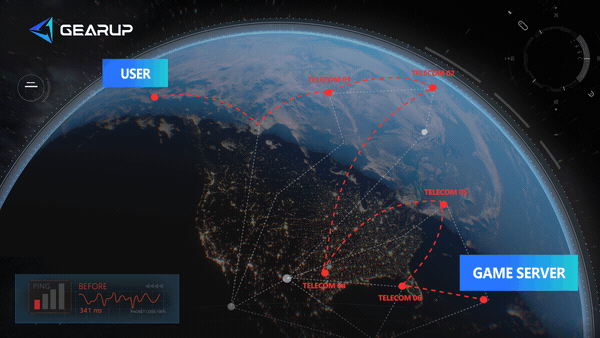
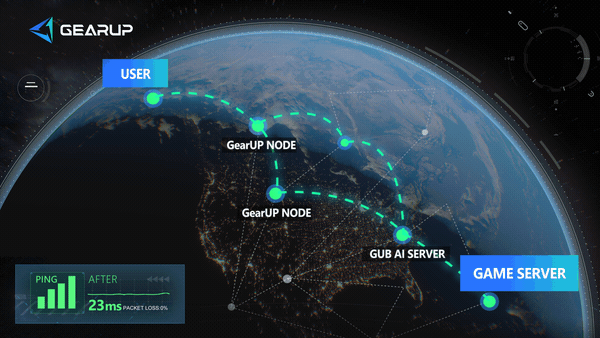
Am I Experiencing Fate Trigger Lag?
If you're unsure whether you're experiencing lag or don't know what's causing it, then you might as well check out the differences between network lag and hardware lag:
Network Lag occurs when your connection to the game server is unstable. You'll notice delayed actions (like skills firing late), rubberbanding (characters suddenly jumping back), or other players moving strangely—even if your own controls feel smooth. Check your ping (press F9 in-game); if it's consistently high (150ms+), the issue is network-related.
Hardware Lag happens when your PC can't keep up with the game's demands. Symptoms include low FPS (stuttering, choppy movement), long loading times, or freezes during intense fights—even in single-player mode. Open the settings menu: if lowering graphics quality improves performance, your hardware is the bottleneck.
Fix Network Lag in Fate Trigger First
In most cases, Fate Trigger lag is caused by network issues—your data transmission experiences network jitter, or you're too far from the server. However, we can't manually adjust the network and can only rely on professional gaming accelerators like GearUP.
Its multi-path technology can automatically diagnose network failures and adapt the optimal route through its globally distributed nodes. This reduces connection distance, avoids unstable networks, and ultimately lowers in-game ping while minimizing lag.
Step 1: Click this button to download GearUP.
Step 2: Search for Fate Trigger in the app.
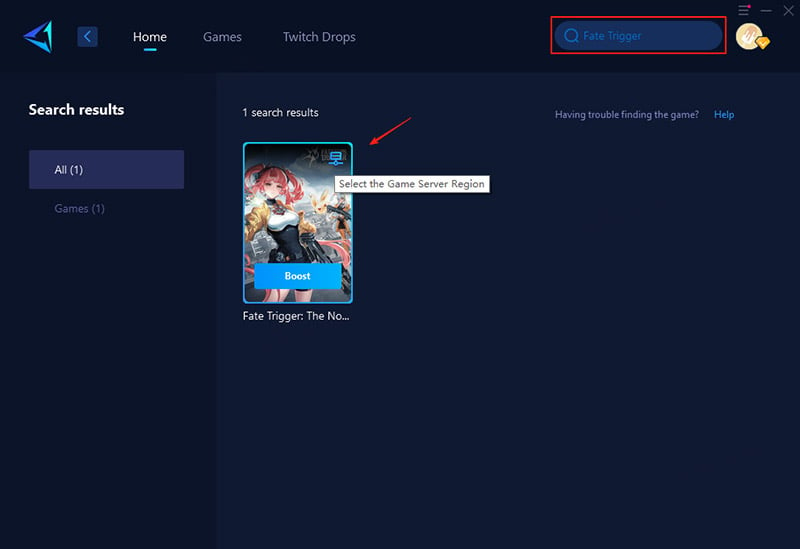
Step 3: Select a server—GearUP lets you switch and connect to global servers for optimal performance.
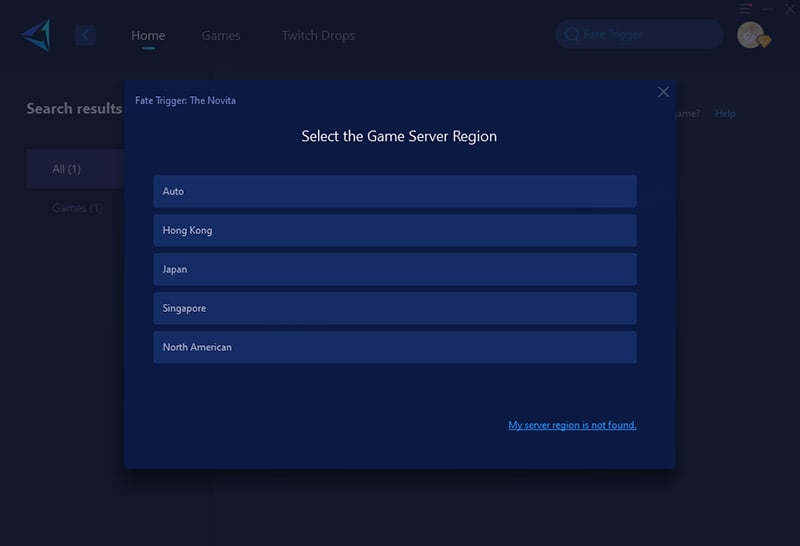
Step 4: Start the Boost process. You'll see real-time network optimization details. Then, launch the game and jump into your match!
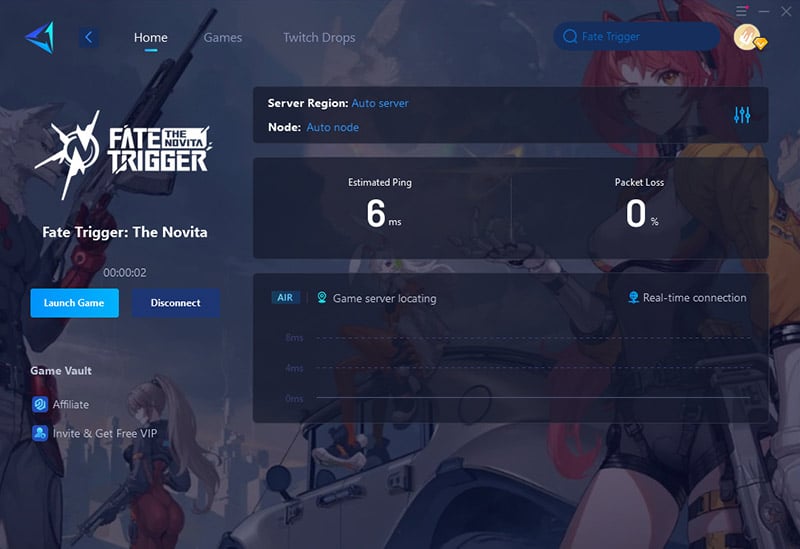
Next: Fixing Hardware-Related Lag
1. Verify Recommended Hardware Specifications
Minimum Requirements:
- OS: Windows 10/11 64-bit
- Processor: Intel Core i5-6600 / AMD Ryzen 7 2700
- Memory: 8 GB RAM
- Graphics: NVIDIA GeForce GTX 1060ti / AMD RX 580 / Intel Arc B570
- DirectX: Version 12
- Network: Broadband Internet connection
- Storage: 40 GB available space
- Notes: SSD recommended for optimal performance
Recommended Requirements:
- OS: Windows 10/11 64-bit
- Processor: Intel Core i7-8700K / AMD Ryzen 5 5600
- Memory: 16 GB RAM
- Graphics: NVIDIA GeForce RTX 2060 / AMD RX 5600XT / Intel Arc B580
- DirectX: Version 12
- Network: Broadband Internet connection
- Storage: 40 GB available space
- Notes: SSD strongly recommended
2. Optimize In-Game Settings
- Lower graphics presets (e.g., shadows, anti-aliasing, textures) to "Medium" or "Low."
- Disable motion blur and ambient occlusion to reduce GPU load.
- Cap FPS to match your monitor’s refresh rate (e.g., 60/144Hz) to stabilize performance.
3. Update Critical Drivers
- GPU Drivers: Install the latest version from NVIDIA/AMD.
- Chipset Drivers: Ensure motherboard/USB controllers are optimized.
- Disable overlays (e.g., Discord, GeForce Experience) to free up resources.
4. Hardware Upgrades (If Necessary)
- GPU/CPU: Upgrade if below minimum specs (e.g., GTX 1650 or Ryzen 5 5600X).
- RAM: 16GB is ideal for multitasking.
- Storage: Migrate the game to an SSD to reduce loading delays.
Conclusion
As Fate Trigger prepares for its global beta and eventual release, don't let lag ruin your first impressions. Traditional fixes aren't enough for today's competitive, cross-server shooters. Equip yourself with GearUP to eliminate connection issues from the start, and enter the battlefield with smooth, uninterrupted gameplay. Your fate deserves a fast connection—get it now.
About The Author
The End

